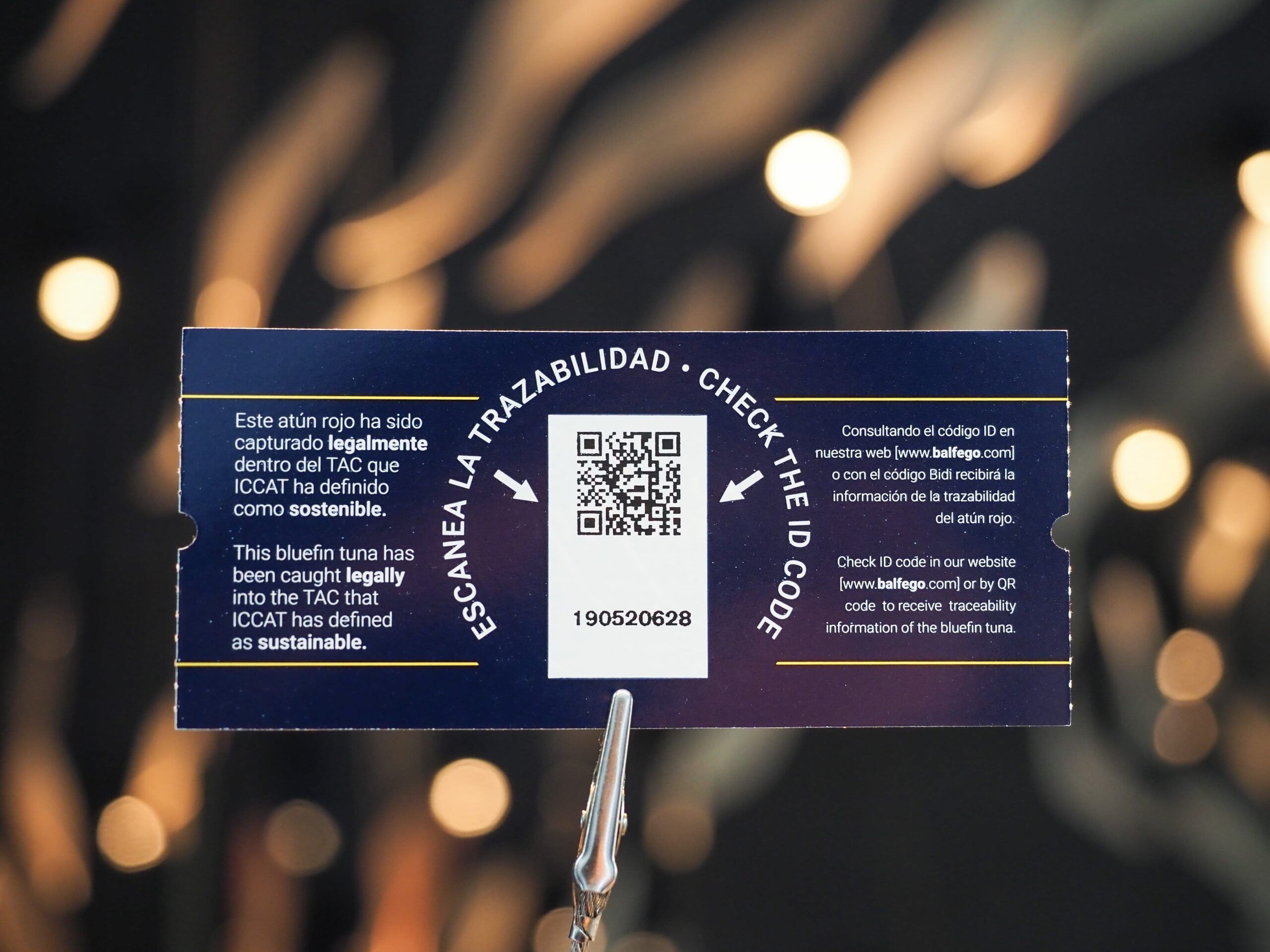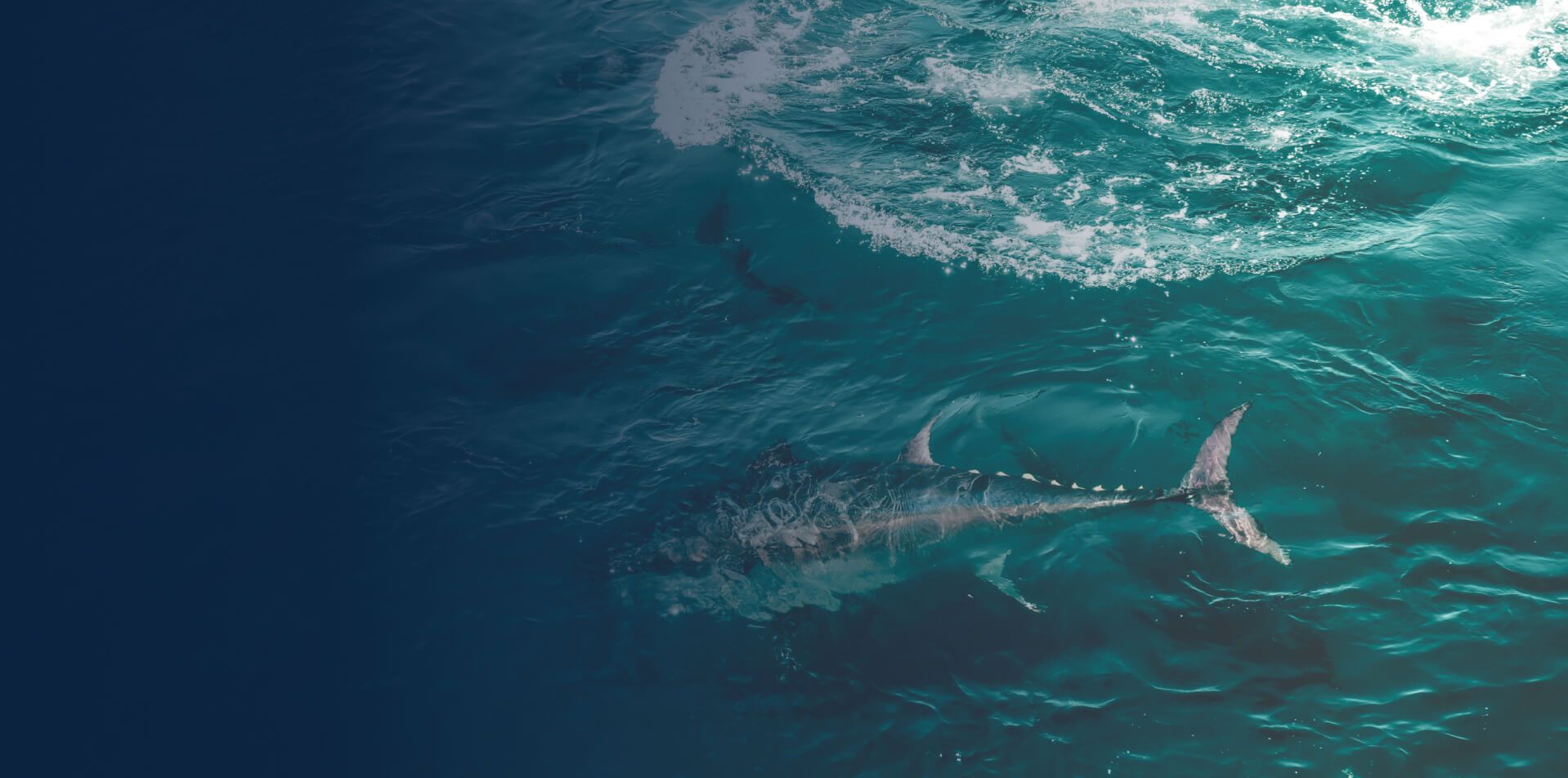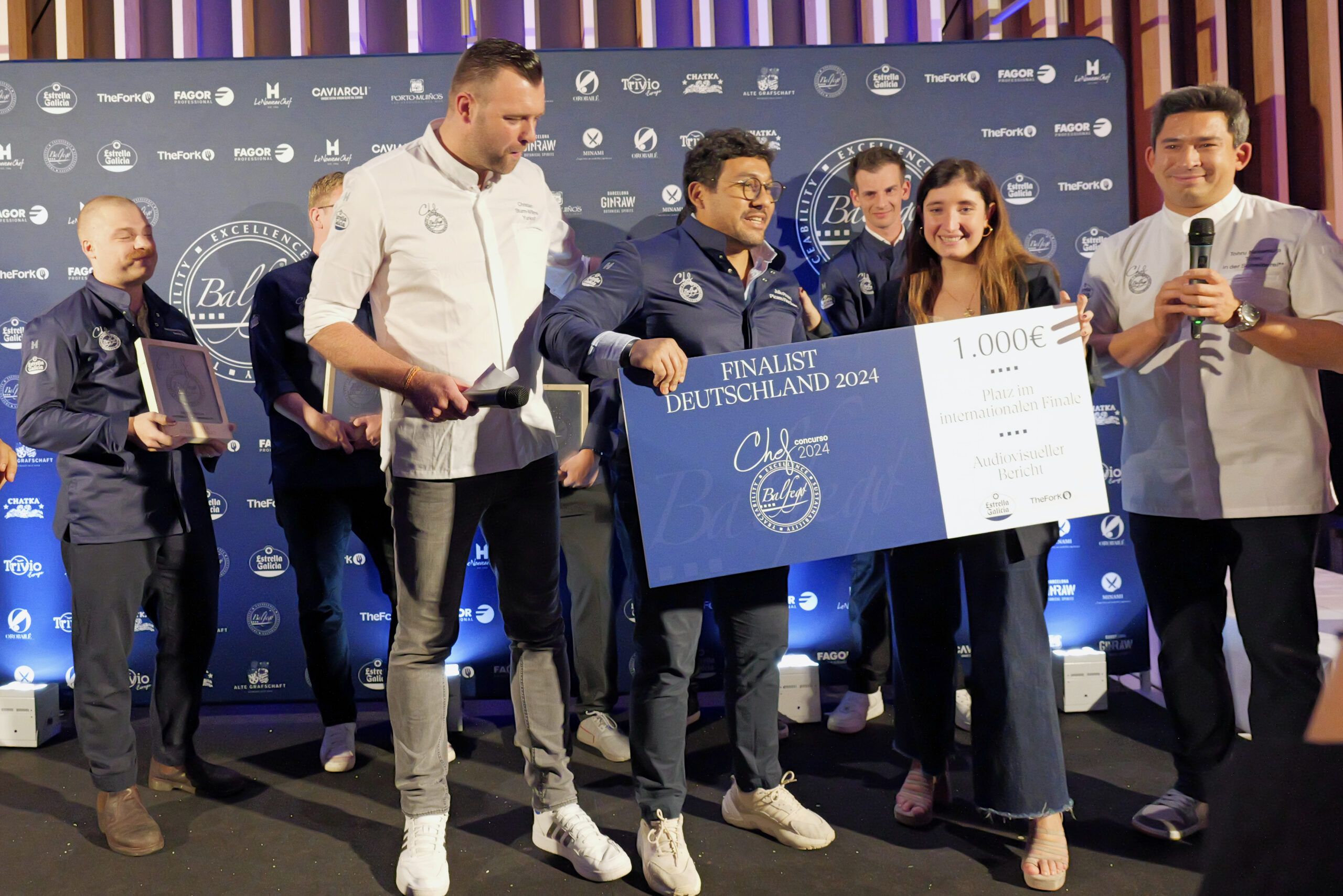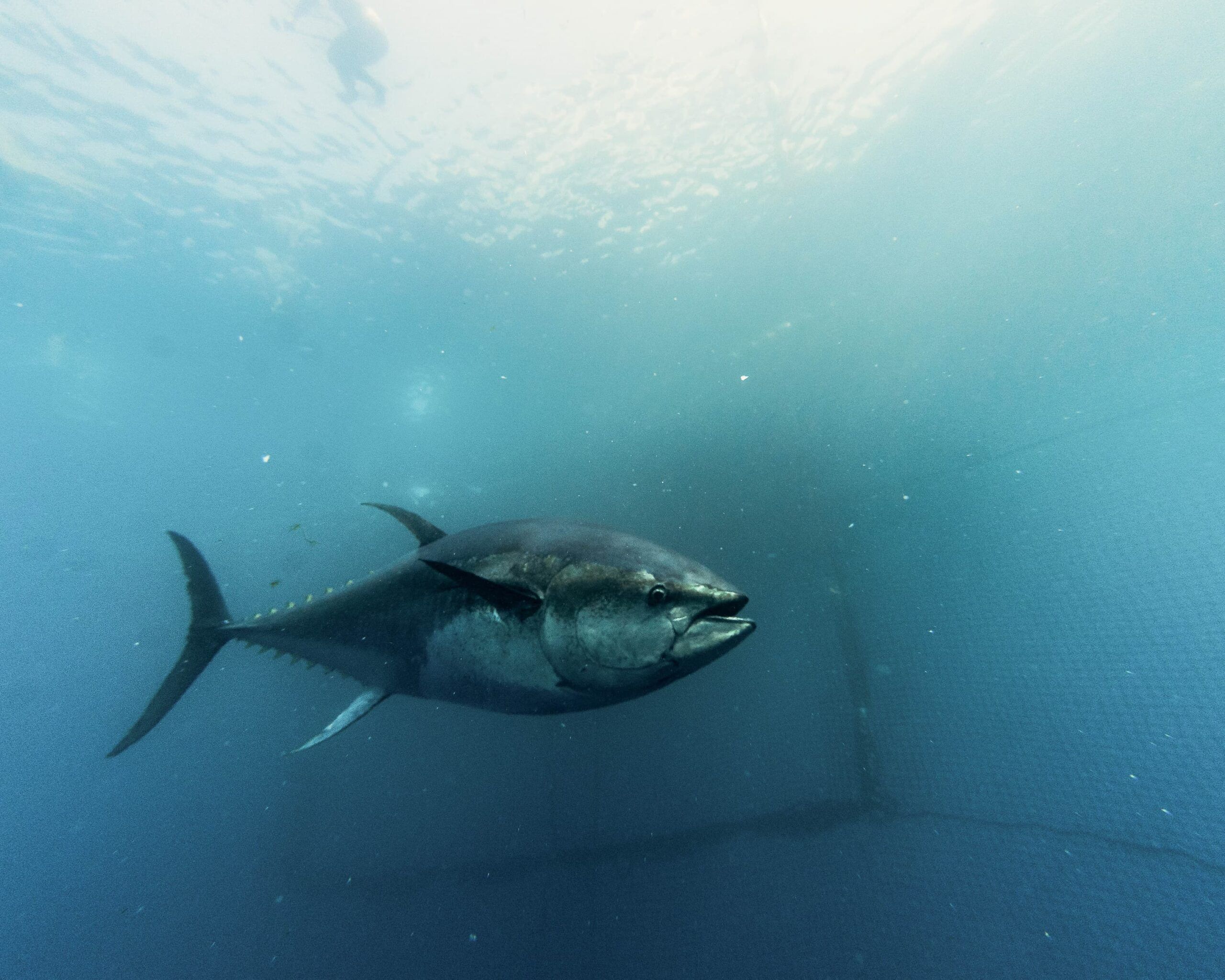
Mediterranean bluefin tuna is an example of the sustainability plan’s success
Balfegó, boasting an environmental sustainability certificate, has always led by example, proposing innovative control measures and acting as the world’s spokesperson on how North Atlantic and Mediterranean bluefin tuna fishing should be managed.
Good news for chefs and diners: the measures established by ICCAT to preserve bluefin tuna have been successful.
At Balfegó, we are celebrating our dedication to bluefin tuna sustainability which has led us, together with large institutions, to implement different measures that guarantee the wellbeing of the species and its preservation for future generations. It’s clear that the key to recovery is in the application of these measures, which we are celebrating at Balfegó, world leaders in the fresh marketing of Mediterranean bluefin tuna.
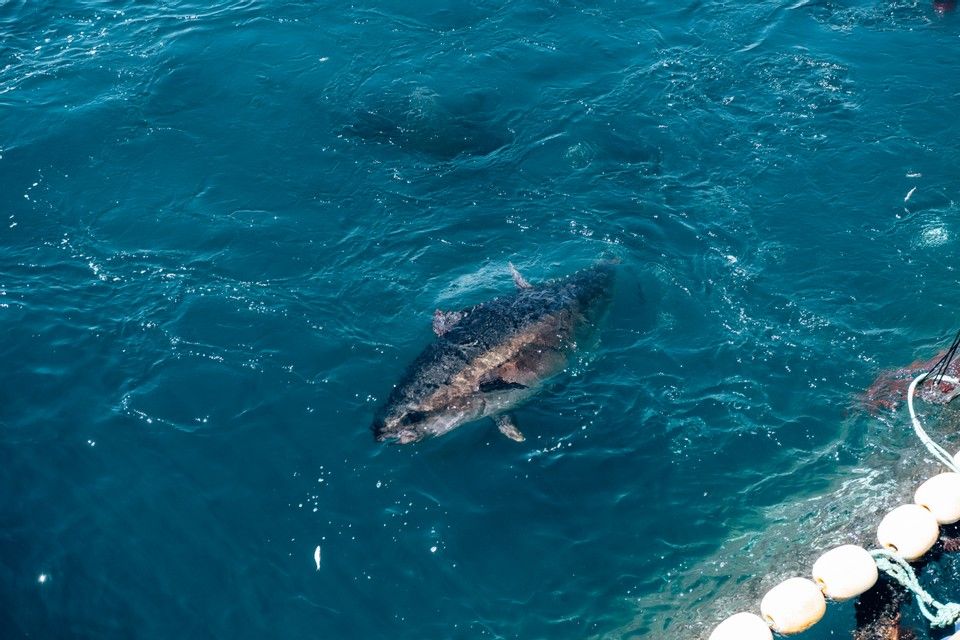
The Red List of Endangered Species’s update confirms that Mediterranean bluefin tuna (Thunnus thynnus) has moved to a status of ‘in recovery’, unlike Thunnus maccoyii which remains ‘endangered’, and Thunnus orientalis ‘near endangered’.
Thunnus thynnus: Mediterranean bluefin tuna vs. Gulf of Mexico’s bluefin tuna
It’s important to differentiate the Mediterranean’s bluefin tuna, which has completely recovered, from the species native to the Gulf of Mexico (Atlantic bluefin tuna), which, unfortunately, has decreased more than 50% in the last decade and is in a fragile situation.
The origin of and way to fish this Thunnus thynnus species makes the difference when it comes to choosing a sustainable fish to include in our responsible gastronomy proposal; the only way to learn and guarantee the origin of this raw material is to track the product.
ICCAT, key to the success of the Mediterranean bluefin tuna sustainability plan
Currently, bluefin tuna fishing is the most studied, controlled, and regulated fishing in the world under any scientific standard. The scarcity problem of bluefin tuna lies within the increasing market demand and, therefore, the increase in catches. In the 90s, catches reached 50,000 tons annually. Eventually, the species was considered to be close to a point of collapse and that’s why, at the end of the 20th century, protection measures began to come into effect.
Because of this, ICCAT (International Commission for the Conservation of Atlantic Tuna), was created, the regional fishing organization under the UN and FAO that manages fishing. Its management policies are based on periodic reports on the state of fishing, issued by the Scientific Committee (SCRS).
ICCAT establishes fishing quotas for tuna fishing countries and therefore ensures that the stock of Western and central bluefin tuna is not depleted. At Balfegó, one of our values is the responsibility that goes far beyond regulations. That’s why we’ve surpassed the regulations established by ICCAT, proposing a lot of the adopted measures and dedicating many resources to studying the species. In fact, we were the first to show the process of bluefin tuna reproduction in the documentary ULTIMATUN.
The main measure that ICCAT took was to drastically reduce the fishing quotas to 12,500,000 tons, implementing parallel control systems to reduce poaching. Another crucial measure was to prohibit the fishing of bluefin tuna that had not yet reached a reproductive age, raising the minimum size to 30 kilos (they are considered to reach a reproductive age at 4). One of Balefegó’s innovative measures is capturing only 150kg bluefin tuna, allowing for six years of reproduction.
Balfegó’s tracking system for bluefin tuna, a first in the world
When talking about providing value and investigating good practices for the good of the species, we try to go one step further. Recently, we developed our own tracking system, which complements or improves upon what ICCAT has demanded. It’s a first for the fishing world.
This system is a clear example of the company’s historic promise to be sustainable and transparent. With this tracking system, we can efficiently and easily guarantee the security and legality of the product not just in fishing, but throughout the entire supply chain.
Balfegó’s Department of Innovation and Sustainability is constantly working to promote responsible consumption and total transparency so that both chefs and diners alike can access all the information they want, fish by fish.
Each fish is individually identified and has a tracking code that allows us to know its origin and fishing date, as well as its percentage of fat infiltration and quality, microbiological, and environmental sustainability certificates. Diners can access this information through a QR code that accompanies each dish featuring Balfegó bluefin tuna.
Balfegó is a leading company worldwide in the commercialization of Mediterranean bluefin tuna; we were pleased to hear the news that confirms the success of ICCAT’s plan. In addition, our commitment to bluefin tuna sustainability has led us to develop and implement different measures to guarantee the wellbeing of the species for future generations.
We are fully committed to our bluefin tuna sustainability pledge through a unique perspective. We don’t just focus on the catching, feeding, and commercialization of bluefin tuna; we also study it so we can contribute to a socially and environmentally sustainable system of responsibility that guarantees the continuity of the species for future generations.
Through our Department of Innovation and Sustainability, we dedicate part of our work to outreach, promoting projects together with scientific institutions such as ICCAT, the Spanish government, and organizations such as the Spanish National Research Council (CSIC), the Spanish Institute of Oceanography (IEO), the Institute of Research and Technology (IRTA), and the University of Cadiz, among others, with the aim of improving knowledge of bluefin tuna as a species and the implementation of projects and initiatives to improve sustainability.
Balfegó, the only bluefin tuna production company with an environmental sustainability certification
From the start, Balfegó has been committed to sustainability and respecting the environment. All this effort has led us to receive the sustainability certificate from AENOR, a certifying entity with a presence in more than 90 countries.
This certificate has a high-quality guarantee that confirms that an organization, product, process, or service meets all required technical regulations or specifications.



